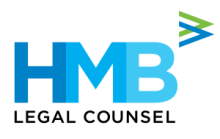This article is the third in a three part series on tips and considerations before opening a fitness studio or gym. For the first article (Tips 1-5), please click here. For the second article (Tips 6-10), please click here. Here are tips 11 -15:

11. Promote Your Studio Cost-effectively. Bad news: building a membership following always takes more time and effort than fitness owners would like. Good news: social media platforms have made marketing for fitness facility easier than it has ever been. One common theme I see among successful fitness brands and ventures that have started within the past 5-10 years is their fierce devotion to maintaining their online brand via Facebook, Twitter, Pinterest, Instagram, Yelp and other relevant social media sources. Social media is a proven winner on announcing sales, discounts and other relevant deals for getting potential clients in the door. Ideally, you should start creating your social media presence about 3 months prior to your grand opening. One word of caution: be careful not to start your online presence too early – I have had friends follow brands/new gyms online for months waiting for the studio or gym to open, only to be constantly let down at the continued delays. This leads to bad feelings from prospective clients and should be avoided where possible.
12. Carefully Weigh Your Financing Options (Debt vs. Equity). Most owners need outside financial support when opening a gym or club facility. This money can come in the form of equity (people who give you money in exchange for an ownership interest in your company) or debt (bank or other third party that gives you money that must be repaid with interest). Many people opt to take debt, as they do not want to give up any ownership or control in the company. However, in many cases, banks and other third party lenders will not lend to an entity with no historical financials. In the near future, the Health and Fitness Blog will have a separate blog entry devoted specifically to this topic (debt vs. equity). Another option to finance your business is to (carefully) explore equipment financing, which is discussed in Tip 14 below.
13. Personal Guaranties (On Third Party Debt). Many third party lenders (banks) will also require a personal guaranty. A personal guaranty, if drafted correctly, will make the guarantor (person or people executing the document) personally liable for the company’s debts. When possible, an owner of the company with significant personal assets should always resist signing the personal guaranty, or at the very minimum attempt to limit the total amount of the personal guaranty. There are a variety of techniques and methods for negotiating down the scope of the guaranty depending on the lender’s appetite for risk.
14. The “Easiest” Financing May Be the Most Costly. Many new business owners get frustrated with the convoluted process and length of time it takes to obtain traditional bank financing, in addition to having to sign a personal guaranty (discussed in Tip 13 above). An alternative source of financing sometimes comes from the equipment companies, which often have affiliated financing entities that lease or sell equipment to club fitness facilities. Be aware that while it is generally easier to obtain financing from an equipment company affiliate, the penalties for non-payment may be swift and severe. In most cases, if you miss a payment on purchased or leased equipment, the financing source will likely have the right to charge you a default interest rate of 15-20%, and after a certain period of time, the equipment will be seized from your location (without any refund for fees paid to date in the case of purchased equipment). Be sure to read the financing agreement closely and find out the default interest rate and equipment seizure remedies, and consult with someone well-versed in finance if you are in over your head.
15. Start Small and Work Your Way Up. Many entrepreneurs are resistant to opening their doors until everything is just right. These owners want all the bells and whistles in their studio or club before they start getting traffic through the door. My advice is to avoid following the mantra “go big or go home” when deciding how much equipment to initially purchase or lease, and what wish-list items you actually install in your studio or club facility before you open your doors. From financial perspective, open machines = negative cash flows. In the end, it is better to start small and, as your membership grows, add treadmills, ellipticals and other equipment assuming there is additional unused space. Also, by starting small and seeing what works and what doesn’t work, you avoid giant expenditures that are big unused eyesores in your facility (double whammy).




 />i
/>i

